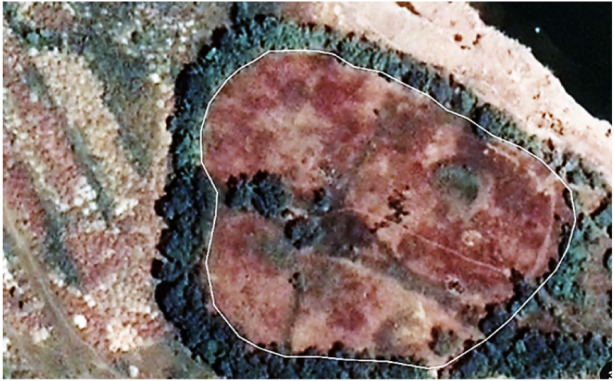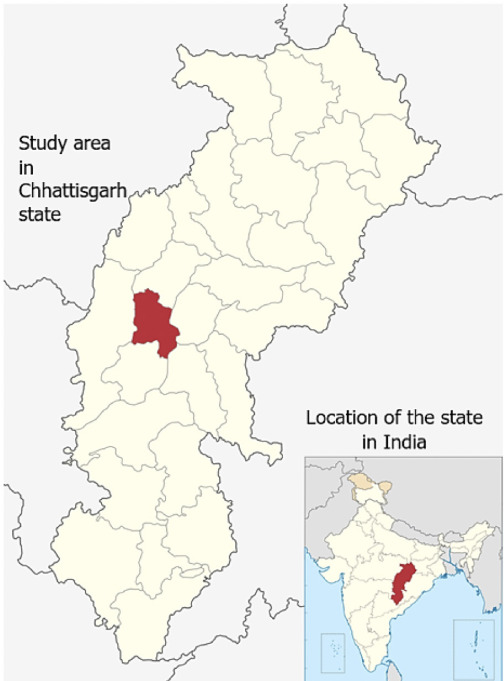印度恰蒂斯加尔邦叠层石-石灰岩地形中的危险废物处置和六价铬污染。
IF 2.4
Q1 Medicine
Journal of Health and Pollution
Pub Date : 2020-08-25
eCollection Date: 2020-09-01
DOI:10.5696/2156-9614-10.27.200907
引用次数: 2
摘要
背景:铬铁矿加工产生的含六价铬废物因其高毒性而对环境健康构成重大危害。曾发生过不当和不安全处置这类废物的情况,造成环境健康危害。目的:本研究的目的是确定黄色水排放的原因和报告的附近居民和牛的健康问题。此外,它还调查了在印度中东部叠层石-石灰石地形的废弃采石场中对危险废物铬铁矿加工残渣(COPR)的不当处置。方法:采用标准的水和废水分析方法,对包括六价铬(Cr(VI))、pH、硫酸盐(SO4 2-)、氯(Cl-)、总硬度、钙(Ca(II))、镁(Mg(II))、碱度和钠(Na(I))在内的变量进行分析,并采用适当的取样、质量保证和质量控制方案。现场铬(VI)分析使用铬检测试剂盒,并在实验室原子吸收分光光度法。结果:六价铬污染的黄色渗滤液迁移导致地表水和地下水大面积污染。在样品中发现了高水平的六价铬。渗滤液中Cr(VI)的最大浓度为1050 mg/L,地表水中为22 mg/L,地下水中为0.26 mg/L。牛和饮用高污染水的居民注意到严重的健康影响。结论:从COPR填埋场中发现了大量六价铬污染物的排放,表明设计中缺乏遏制特征(双层高密度聚乙烯衬垫、粘土、渗滤液收集)。在废弃的石灰石矿山中处置COPR是不可取的。研究发现,由于叠层石环境中缺乏有机或真核沉积,研究地点高度断裂的叠层石-石灰岩环境对Cr(VI)的动员几乎没有抵抗力。还有人指出,该地区的排水格局可能会使受污染的排放物转移到附近的河流系统。附近居民没有意识到被污染的渗滤液的不利影响,而是将被污染的水用于洗澡、洗涤等。委员会发现,印度政府关于建造危险废物填埋场的适用条例在使用不活动的石灰石矿山作为填埋场方面不够充分。利益竞争:作者声明没有经济利益竞争。本文章由计算机程序翻译,如有差异,请以英文原文为准。



Hazardous Waste Disposal in Stromatolitic-Limestone Terrain and Hexavalent Chromium Contamination in Chhattisgarh State, India.
Background. Hexavalent chromium-containing waste from chromite ore processing is a major environmental health hazard due to its high toxicity. There have been instances of improper and unsafe disposal of this waste, leading to environmental health hazards. Objectives. The objective of the present study was to identify the cause of yellow colored water discharge and reported health issues in nearby residents and cattle. In addition, it investigated the improper disposal of chromite ore processing residue (COPR), a hazardous waste, in an abandoned quarry in stromatolitic-limestone terrain in central-east India. Methods. Standard methods of analysis of water and wastewater were used for the analyses of variables, including hexavalent chromium (Cr(VI)), pH, sulfate (SO42−), chlorine (Cl−), total hardness, calcium (Ca(II)), magnesium (Mg(II)), alkalinity and sodium (Na(I)) with proper sampling, quality assurance, and quality control protocols. Onsite Cr(VI) was analyzed using a chromium testing kit, and in the laboratory by atomic absorption spectrophotometry. Results. Large-scale contamination of surface and groundwater was noted due to the migration of hexavalent chromium-contaminated yellow colored leachate. High levels of hexavalent chromium were noted in the samples. The maximum Cr(VI) concentration observed was 1050 mg/L in leachate, 22 mg/L in surface water and 0.26 mg/L in the groundwater sample. Acute health effects were noted in cattle and by residents who consumed the highly contaminated water. Conclusions. A large volume of discharge of hexavalent chromium contamination from the COPR landfill was found, indicating the absence of containment features in the design (double high-density polyethylene liners, clay, leachate collection). Disposal of COPR in an abandoned limestone mine is inadvisable. The highly fractured stromatolitic-limestone environment at the study site was found to offer almost no resistance to the mobilization of Cr(VI) due to the absence of organic or eukaryotic deposition in the stromatolitic environment. It was also noted that the drainage pattern of the area facilitates a possible translocation of contaminated discharge to the nearby river system. Nearby residents were unaware of the adverse impacts of the contaminated leachates and were using the contaminated water for bathing, washing, etc. Applicable Indian governmental regulations regarding the construction of hazardous waste landfills were found to be insufficient with respect to the use of inactive limestone mines as landfill sites. Competing Interests. The authors declare no competing financial interests.
求助全文
通过发布文献求助,成功后即可免费获取论文全文。
去求助
来源期刊

Journal of Health and Pollution
Medicine-Public Health, Environmental and Occupational Health
自引率
0.00%
发文量
0
审稿时长
18 weeks
期刊介绍:
The Journal of Health and Pollution (JH&P) was initiated with funding from the European Union and World Bank and continues to be a Platinum Open Access Journal. There are no publication or viewing charges. That is, there are no charges to readers or authors. Upon peer-review and acceptance, all articles are made available online. The high-ranking editorial board is comprised of active members who participate in JH&P submissions and editorial policies. The Journal of Health and Pollution welcomes manuscripts based on original research as well as findings from re-interpretation and examination of existing data. JH&P focuses on point source pollution, related health impacts, environmental control and remediation technology. JH&P also has an interest in ambient and indoor pollution. Pollutants of particular interest include heavy metals, pesticides, radionuclides, dioxins, polychlorinated biphenyls (PCBs), polycyclic aromatic hydrocarbons (PAHs), volatile organic compounds (VOCs), air particulates (PM10 and PM2.5), and other severe and persistent toxins. JH&P emphasizes work relating directly to low and middle-income countries, however relevant work relating to high-income countries will be considered on a case-by-case basis.
 求助内容:
求助内容: 应助结果提醒方式:
应助结果提醒方式:


